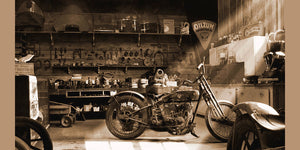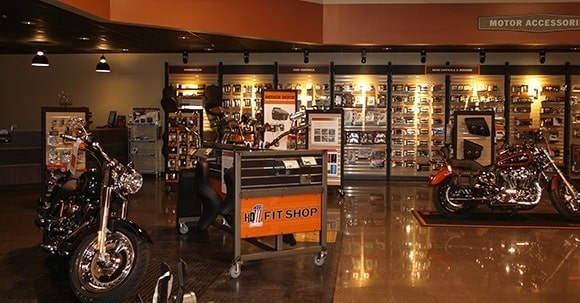Your Best Motorbike Shop for High Quality Parts and Accessories
Your Best Motorbike Shop for High Quality Parts and Accessories
Blog Article
Recognizing the Important Parts of a Motorcycle: A Comprehensive Guide for Fanatics
For motorbike fanatics aiming to elevate their riding experience and guarantee their bikes run smoothly, recognizing the crucial parts of a bike is critical. Each component, from the engine's elaborate operations to the critical function of the stopping systems, not only influences efficiency however also security and comfort. This overview will certainly go through the essential components that every motorcyclist ought to be acquainted with, allowing educated choices in both maintenance and potential upgrades. As we begin this exploration, one must ask: exactly how does each component connect to produce the seamless ride every enthusiast looks for?
Engine Elements

The camshaft plays an important function in controlling the timing of the engine's shutoffs, making sure the exact opening and closing needed for effective gas and air intake, as well as exhaust expulsion. This timing is important to keeping ideal engine efficiency and performance. Additionally, the carburetor or gas shot system, depending upon the motorbike model, is in charge of blending air with fuel in the right ratio for combustion.
The air conditioning system, either air or liquid-based, works to maintain the engine's temperature level within operational restrictions, stopping getting too hot and guaranteeing longevity - motocross parts nz. Each component, carefully created and incorporated, contributes to the seamless procedure of the engine, specifying the motorcycle's power output and total efficiency
Transmission System
Indispensable to the bike's performance, the transmission system ensures efficient power transfer from the engine to the wheels. This system comprises several crucial components, consisting of the clutch, gearbox, and last drive, each playing an essential function in equating the engine's power right into motion. The clutch, normally run by a hand lever, offers to disengage the engine and engage from the transmission, enabling smooth equipment changes and controlled acceleration.
The transmission, frequently described as the transmission correct, has a collection of gears that cyclists can by hand change with to adjust the bike's speed and torque outcome. These gears are prepared in a series that allows the bike to increase smoothly and maintain optimum engine performance across numerous speeds. Many motorbikes utilize a consecutive gearbox, needing the motorcyclist to shift equipments in a predetermined order.
Braking Devices
While comprehending the transmission system is essential to using a bike's power, just as essential is the ability to control and stop that power efficiently, which is where braking devices enter into play. Brakes are vital for safety and performance, providing the rider with the needed control to navigate different terrains and conditions. Commonly, motorcycles include two kinds of braking systems: disc brakes and drum brakes.
Disc brakes are more widespread in contemporary motorbikes due to their premium efficiency. They contain a brake disc, caliper, and pads. When activated, the caliper squeezes the brake pads against the spinning disc, transforming kinetic energy into warm, thereby reducing the wheel. This system provides much better heat dissipation, consistent performance, and enhanced stopping power, especially in damp problems.
Alternatively, drum brakes, though less common, are still found in some motorcycles. They function by pressing brake shoes against the internal surface area of a drum attached to the wheel. While generally much less reliable in warmth dissipation and quiting power, drum brakes are less complex and extra cost-effective.
Comprehending these stopping systems' nuances enables motorcyclists to maintain their motorcycles properly and value the design that makes sure reliable and risk-free stopping.
Suspension and Steering
Suspension and guiding systems are important components that considerably affect a bike's handling and adventure comfort. The suspension system, being composed of forks at the front and shock absorbers at the back, absorbs roadway abnormalities, boosting security and control. Front forks, commonly telescopic or inverted, compress and rebound to minimize effects, while rear shock absorbers maintain tire call with the road, vital for grip and safety and security.
Guiding, focused around the handlebars, links the cyclist to the motorbike's directional control. The guiding head bearings make certain smooth procedure, enabling precise maneuverability. Proper alignment and upkeep of these bearings are critical for foreseeable guiding feedback and decreasing cyclist exhaustion.
The suspension's adjustability is one more critical aspect; preload, damping, and rebound settings enable personalization to suit numerous riding conditions and styles. This versatility is important for optimizing efficiency, whether navigating metropolitan roads or dealing with tough trails. Developments like digital shock absorber supply real-time changes, boosting trip quality across diverse surfaces.

Electric Systems
After making certain a smooth and controlled experience with reliable suspension and guiding systems, focus transforms to the electric systems, click to investigate a critical facet of modern-day motorcycles. These systems play an important function not just in starting the engine however also in powering different parts that boost the performance and safety of the motorcycle.
At the heart of a bike's electrical system is the battery, which stores electric power needed Check Out Your URL for starting the engine and powering complementary systems - mx parts nz. The alternator or generator, combined with the rectifier-regulator, makes certain the battery remains billed while the motorbike functions, transforming mechanical energy right into electrical power and preserving voltage levels
The ignition system, an additional critical part, is accountable for firing up the air-fuel mixture in the engine's cylinders. Modern motorcycles often utilize an electronic ignition system, offering higher performance and integrity compared to traditional systems.
Lights systems, consisting of fronts lights, tail lights, and signs, are also important, guaranteeing visibility and safety for the rider. Added electronic parts such as sensors, control systems, and shows add to innovative attributes like gas injection management, anti-lock braking systems (ABDOMINAL MUSCLE), and electronic control panels, additionally enhancing the riding experience.
Conclusion
A complete understanding of a bike's vital components, including the engine, transmission system, stopping mechanisms, suspension, guiding, and electric systems, is crucial for fanatics aiming to optimize safety and security, performance, and convenience. Mastery of these aspects enables for notified choices regarding upkeep and upgrades, inevitably improving the riding experience. By incorporating this understanding, bikers can guarantee their motorcycles operate at womens motorcycle accessories peak effectiveness and dependability, thereby optimizing both satisfaction and durability of their vehicles.
For bike lovers looking to boost their riding experience and guarantee their bikes run smoothly, comprehending the necessary components of a motorcycle is vital.Important to the motorbike's functionality, the transmission system guarantees effective power transfer from the engine to the wheels.While recognizing the transmission system is key to using a motorbike's power, similarly vital is the capability to control and stop that power properly, which is where stopping mechanisms come right into play. Commonly, bikes feature two types of stopping systems: disc brakes and drum brakes.
A detailed understanding of a bike's necessary components, consisting of the engine, transmission system, braking devices, suspension, guiding, and electric systems, is important for enthusiasts aiming to optimize performance, safety and security, and convenience.
Report this page